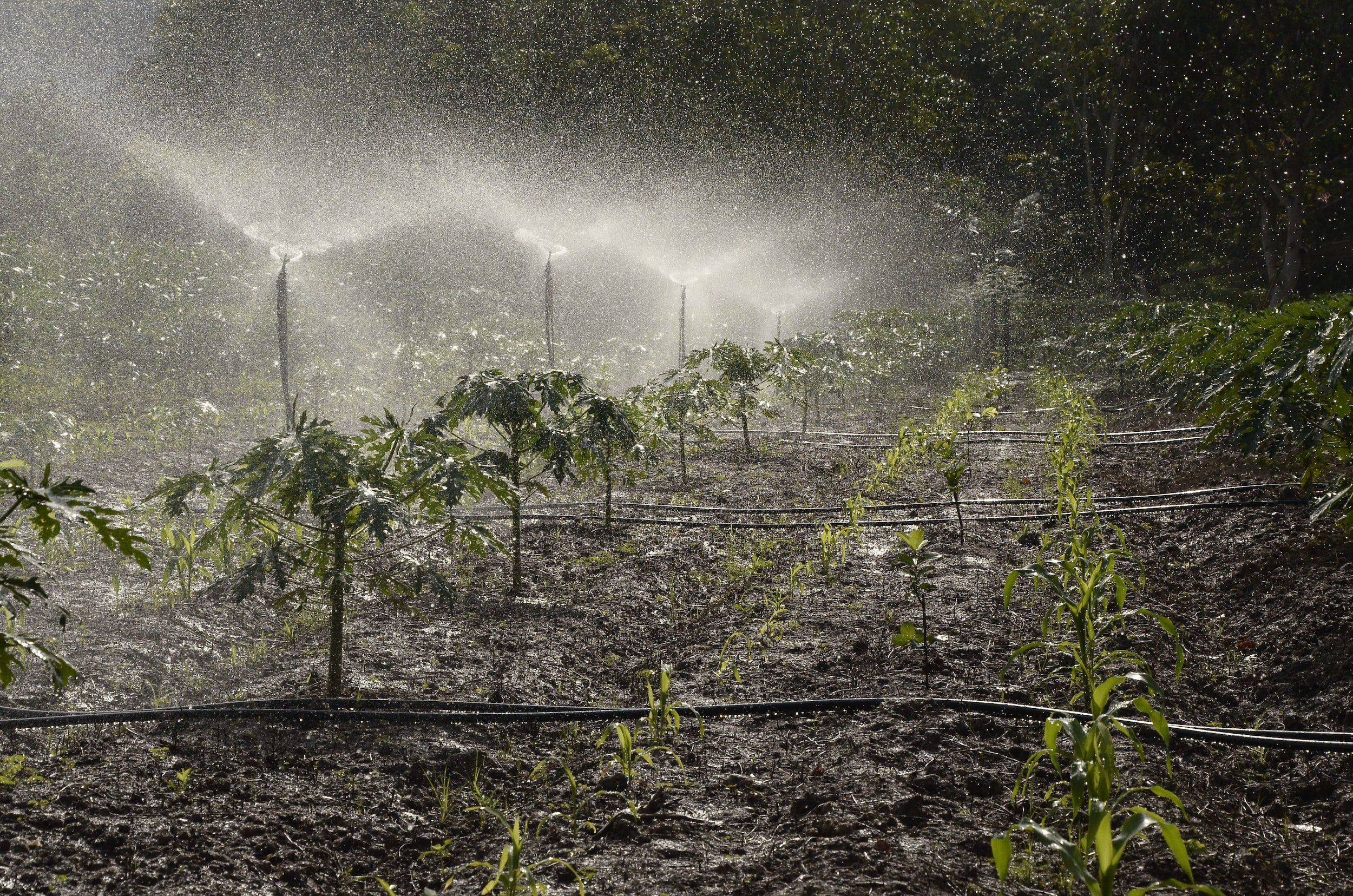CHEMICAL WINEFARE: The War is over, but not the Revolution ...
/Have you ever wondered from where the use of modern chemicals in agriculture originated and how irrigation and chemicals became related? After World War II, the modern use of supplemental irrigation to increase yields was aligned with agrochemical farming, or what became ‘conventional’ agriculture. The post-World War II Green Revolution was the application of science and technology to increase global food production. The genetic engineering of high-yielding varieties (HYV) was the lead technology. An example of this is the well-intentioned work of the Nobel prize-winning American agronomist Norman Borlaug, who, in 1944, left for Mexico to fight a wheat fungus and developed a high-yielding, disease-resistant variety. So productive was this new variety, that the wheat stalk tipped over due to the excess weight of the grain. It was then crossed with a Japanese wheat variety which produced wheat with a shorter stalk able to remain upright. This development doubled wheat yields in Mexico, and then in India and Pakistan, where it staved off famine. However, the global population rates are increasing more rapidly than food production (Borlaug 1958). And unbeknownst to this agricultural pioneer, the chemical accoutrements that accompanied genetic engineering were to go on to breed social injustice and substantial ecological damage. Agricultural fertilisers and pesticides are essential for the HYVs of cereal crops, which ingest nutrients, and water, from the ground faster and in much greater quantities than indigenous varieties.
The world was under the enchantment of the promises of great productivity and profit, mostly undertaken by the chemical manufacturers. Greater food “production” became confused with food “security”, and both upstaged food “quality”. Meanwhile, the chemical manufacturers, Bayer (Monsanto), BASF, Hoechst, Agfa, Griesheim-Elektron, and Chemische Fabrik vorm, had formed IG Farben in 1925, and became the largest single campaign donor to Hitler's election campaign and his war effort, only after having discharged all of their Jewish employees. A major government contractor, providing significant material for the German war effort, IG Farber developed the nerve gas Sarin, and the hydrogen cyanide-based pesticide, Zyklon B, used in Auschwitz and other Nazi concentration camps. Disbanded by the Allies after the war, IG Farben’s employees were either jailed or moved on to collaborate with other chemical companies in new professional positions. With the war over, the remaining chemical companies and their international subsidiaries had to find a new market, and so they turned to the world’s farmers, effectively declaring war on the world’s food supply and nature - the new enemy.
“Industrial agriculture has pushed food production to use methods by which the water retention of soil is reduced and the demand for water is increased… the shift from organic fertilizers to chemical fertilizers and the substitution of water-prudent crops by water-thirsty ones have been recipes for water famines, desertification, waterlogging and salinization” (Shiva 2016). The Green Revolution forced Third World agriculture towards wheat and rice production. These new, non-indigenous, genetically modified crops demanded more water than millet and consumed three times more water than the indigenous varieties of wheat and rice. The consequences have been costly and the main goal still remains unachieved (Shiva 2016). Their indigenous irrigation methods were also replaced, deemed too inefficient, and were “replaced by oil engines and electric pumps that extracted water faster than nature’s cycles could replenish the groundwater” (Shiva 2016).
The post-World War II Green Revolution separated agriculture from the land. This long-held wisdom, that the world cannot be fed without chemicals and synthetic fertilisers may be losing its hold. Soil and water depletion costs $37 billion in the United States annually and $400 billion globally. This presumably is impetus enough to initiate new investigations in farming methodologies that reject tillage and chemicals (Hawken 2017). “Evidence points to a new wisdom: The world cannot be fed unless the soil is fed” (Hawken 2017).
However, this is far from a new idea…
LJB, Founder of The Wine and Climate Change Institute

